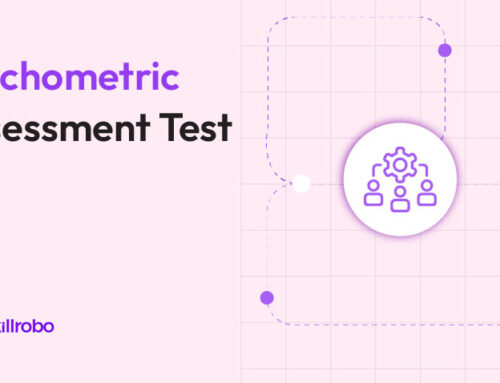Table of Contents
Related articles

Staying organized is crucial for success in today’s fast-paced and ever-evolving business world. It not only promotes efficiency but also results in better judgment, increased output, and greater profitability. But creating a successful organizational plan can frequently seem like a challenging endeavor, leaving many unclear about where to begin. To expand the business, a corporation might define and accomplish significant goals with the help of an organizational strategy.
Organizational plans contain several steps and might include goals for expansion, workforce development, financial planning, and planning for products and services. Through an organizational strategy, a company can address most aspects of its operations and discover ways to expand in a specific direction. In this article, we define organizational plans, discuss several sorts of planning goals, and explain how to develop an organizational plan.
What is an Organizational Plan?
Organizational planning is identifying a company’s purpose, formulating objectives to realize the maximum potential, and developing progressively specialized duties to achieve those objectives. A strategy for the organization’s structure prepares the path for the company to flourish and turn a profit. An organizational plan can enhance employee’s assets, or goods in addition to helping it expand as a whole.
Five steps are often included in an organizational plan, including strategic planning, operational planning, reviewing, and updating as needed. Every step builds on the one before it, ensuring that the organization can accomplish the bigger objectives. A typical organizational plan looks at the overall organization and more ambitious, longer-term goals before breaking them down into more manageable, shorter-term ones.
Types Of Organizational Planning
1. Strategic Planning:
This is a high-level, long-term planning process that entails establishing the organization’s overarching goals and selecting the most effective strategies for achieving them. Strategic planning often spans a period of three to five years and handles big-picture issues like the direction of the company, the distribution of key resources, and commercial growth.
Strategic planning typically takes into account both controllable and uncontrollable elements as well as how to modify them. The goals must be consistent with the overall mission, vision, and values of your organization.
2. Tactical Planning:
Once the strategic plans have been created, it is time to determine how to put them into action. Planning a tactical strategy can help with it. Accomplishing the strategic goals entails creating comprehensive strategies and actions. Tactical plans primarily involve middle management and are short-term in nature, lasting one to three years on average. These immediate goals demonstrate how your business intends to carry out its longer-term strategic plan.
3. Operational Planning:
This sort of planning is focused on the quick implementation of the tactical plan’s recommended strategies. Operational plans, which address how the business’s daily operations are carried out, are often annual. They involve employees and lower-level managers.
Operational plans could include task assignments that are relevant to the objectives of the tactical strategy, such as a process for recording and handling work absences, as well as work schedules, policies, rules, or regulations that establish standards for employees.
4. Contingency Planning:
Contingency planning, also referred to as “Plan B,” is imagining potential future scenarios, particularly bad ones, and developing plans to deal with and get over them. This kind of preparation is essential for risk management. Companies may create backup plans for situations like how to react to a natural disaster, broken software, or the abrupt retirement of a C-level executive.
5. Financial Planning:
Planning for the organization’s financial requirements and objectives is necessary. Budgeting, predicting income and expenses, managing cash flow, and planning investments are all included. Financial planning is essential to ensuring that the company has the resources it needs to run and expand. The majority of businesses want to expand their businesses while maintaining and improving their financial health. This may make up a sizable portion of that. Financial planning is crucial to ensure the business has the necessary funds to operate and grow.
How To Create An Effective Organizational Plan?
An effective organizational plan is created through several phases. Each of these processes is essential for ensuring that the plan is comprehensive, realistic, and aligned with the organization’s overall goals and objectives. Here’s a step-by-step guide to help you create an effective organizational plan:
Set a Strategic Plan:
Establishing the goals of your organization is the first stage. These goals ought to be specific, measurable, achievable, relevant, and time-bound (SMART). Clear objectives give your planning direction and a standard by which you may gauge your success.
These objectives need to be crucial to the company’s performance and have to be consistent with the organization’s mission and values. The strategic plan goals are typically broken down into smaller, more manageable goals at later stages of the organizational planning process because of their size.
There are several ways to create a strategic plan:
- Collecting business data, such as performance indicators.
- Examine the values and mission of the company.
- The SWOT analysis process.
- Establishing objectives based on the data above.
Transform The Strategic Plan Into Tactical Plan:
In the tactical plan stage of organizational planning, the strategic plan is transformed into more attainable and quantifiable goals. Tactical planning will engage other managers in addition to the high-level managers who participated in strategic planning. A tactical plan needs to include methods for tracking the development of these objectives. Over the next five years, the strategic strategy can call for diversifying the company’s workforce.
- Establish quarterly targets for each department that complement the strategic plan, such as creating a quota for the sales staff to help the business reach its strategic revenue goal.
- Create processes for evaluating goal achievement to ensure that strategic and tactical objectives are being accomplished, such as running a CRM report every quarter and presenting it to the Chief Revenue Officer to verify that the testing department is meeting its quota.
- Make backup plans for things like what to do if the testing team’s CRM breaks or there is a data breach.
Drafting Operational Strategies:
The objectives from the strategic and tactical plans are implemented into daily operations by the operational plans. Operational plans describe the regular work you conduct to accomplish the objectives of the strategic and tactical plans. The processes that regulate how particular employees spend their days are known as operational plans, and they are mostly the responsibility of middle managers and the staff that they supervise.
One needs to develop new corporate policies, modify workflows, or collaborate with experts to reach the objectives. Involving employees at all levels in organizational planning is possible. Operational plans for achieving these objectives may include strategies for minimizing unconscious prejudice in the workplace, new directions for human resources staff, and methods for recruiting diverse new applicants for interviews.
Implementing The Plans:
A key phase in the organizational planning process is the implementation of the plans, as this is when organizations put all of the planning from the other processes to use in their everyday operations. As each new process and procedure is formed as an operational plan and used to carry out the plan, it should accomplish the tactical and strategic planning objectives. This is how an organization can fulfill the goals that have been set.
Therefore, if the company has developed operational plans on how to hire diverse applicants, train staff to reduce unconscious bias, and boost training for human resources workers in particular, all of those plans should be implemented at the plan execution stage.
Monitor and Revise the Plans:
To make sure the organization is meeting its objectives, it is crucial to regularly monitor the performance of the plan and make revisions wherever applicable. Depending on the organization’s aims, the period for monitoring and revision will change, but this should be anticipated from the start of the organizational planning process. While management assesses overall performance and any pertinent data from across the entire organization, individual departments and teams may evaluate their performance and offer data to management.
Monitoring and revising can enable an organization to see how to adjust plans to fulfill those goals if goals and metrics are not being met and it appears that the strategic plan goals are not being achieved by the previous phases. An organization and any employee who is committed to work will be in a position to adjust plans swiftly to accomplish goals in this manner rather than waiting to see if things turn out as planned.
Examples Of Organizational Planning:
To better assist you to comprehend the different shapes a plan might take, examples of organizational planning are provided below. With this information, you may choose the organizational structure that is best for your business.
Workforce Development Planning
The goal of workforce development is to build a diverse, high-performing workforce composed of devoted and contented workers. High-performance organizations do not emerge by accident; rather, years of good planning and plan execution produce a competitive workforce.
Planning for workforce development could include setting objectives to achieve or beyond the Equal Employment Opportunity Commission’s (EEOC) goals for equal employment opportunities. Another example is developing sophisticated training programs to produce managers that are knowledgeable and experienced.
Product and Services Planning
Developing a product and service combination that is more enticing than your competitors’ is the aim of product planning. Operations, Finance, and Marketing are responsible for product planning. The marketing division is in charge of figuring out what the target audience wants and needs. The accounting department offers suggestions on how to control costs and determine the optimum rates, while the operations department is in charge of offering input on how to design and manufacture goods or develop services.
One method of product planning is the product pyramid profit model. According to the product pyramid model, businesses offer a variety of products in the same category, each with a distinct price point and level of quality. Serving all types of customers in the market segment can help the company increase market share for its high-profit premium products or services, even though it may make little to no money on low-end products.
Expansion Plans
Planning for the next phases of growth in their businesses should be a constant goal for good business owners and managers. Growth strategies outline ways to overcome obstacles and seize opportunities to overtake rivals in the market. They also identify opportunities and potential barriers to success.
Small businesses have a variety of choices at their disposal to keep their businesses expanding. For instance, marketing can be a key growth engine for startups without a track record. Another illustration is the speedy national or international distribution of a small company’s products through well-established distribution channels thanks to licensing.
Financial Planning
Financial planning is a practice that both businesses and consumers engage in. Businesses create plans to control their debt and make the most of their profits. Innovative organizations never leave cash lying around; instead, they always use it to generate a profit or make investments in the future of the business. To increase the value of their financial holdings, business owners can either create their financial plans or hire qualified experts.
Boost Your Hiring Process with Skillrobo
The success of your business depends on organizational planning, despite the fact that it can be a lengthy and challenging process. Why? The correct plan will ensure that everyone on your team understands the goals of your company and the steps necessary to reach them.
Your workforce will benefit from a well-defined organizational strategy because everyone will be aware of their daily responsibilities and the reasons for their necessity. They will have clear goals to keep them motivated and productive.
Using Skillrobo, an innovative online talent evaluation platform, as part of your organizational planning can significantly enhance your recruitment approach. Skillrobo can help you define the specific skill sets required for each role, ensuring clarity before the hiring process begins.
With its comprehensive suite of customizable assessments in various fields, it effectively gauges candidate aptitude, technical know-how, and specific skill proficiencies. Its robust analytics provide data-driven insights, simplifying decision-making and aiding in efficient team-building. By identifying and recruiting the most skilled candidates, Skillrobo aids in fostering a competent workforce, crucial for the successful execution of your organizational plan.
Streamline operations, optimize resources, and improve productivity with Skillrobo. Click here to Sign-Up!

Staying organized is crucial for success in today’s fast-paced and ever-evolving business world. It not only promotes efficiency but also results in better judgment, increased output, and greater profitability. But creating a successful organizational plan can frequently seem like a challenging endeavor, leaving many unclear about where to begin. To expand the business, a corporation might define and accomplish significant goals with the help of an organizational strategy.
Organizational plans contain several steps and might include goals for expansion, workforce development, financial planning, and planning for products and services. Through an organizational strategy, a company can address most aspects of its operations and discover ways to expand in a specific direction. In this article, we define organizational plans, discuss several sorts of planning goals, and explain how to develop an organizational plan.
What is an Organizational Plan?
Organizational planning is identifying a company’s purpose, formulating objectives to realize the maximum potential, and developing progressively specialized duties to achieve those objectives. A strategy for the organization’s structure prepares the path for the company to flourish and turn a profit. An organizational plan can enhance employee’s assets, or goods in addition to helping it expand as a whole.
Five steps are often included in an organizational plan, including strategic planning, operational planning, reviewing, and updating as needed. Every step builds on the one before it, ensuring that the organization can accomplish the bigger objectives. A typical organizational plan looks at the overall organization and more ambitious, longer-term goals before breaking them down into more manageable, shorter-term ones.
Types Of Organizational Planning
1. Strategic Planning:
This is a high-level, long-term planning process that entails establishing the organization’s overarching goals and selecting the most effective strategies for achieving them. Strategic planning often spans a period of three to five years and handles big-picture issues like the direction of the company, the distribution of key resources, and commercial growth.
Strategic planning typically takes into account both controllable and uncontrollable elements as well as how to modify them. The goals must be consistent with the overall mission, vision, and values of your organization.
2. Tactical Planning:
Once the strategic plans have been created, it is time to determine how to put them into action. Planning a tactical strategy can help with it. Accomplishing the strategic goals entails creating comprehensive strategies and actions. Tactical plans primarily involve middle management and are short-term in nature, lasting one to three years on average. These immediate goals demonstrate how your business intends to carry out its longer-term strategic plan.
3. Operational Planning:
This sort of planning is focused on the quick implementation of the tactical plan’s recommended strategies. Operational plans, which address how the business’s daily operations are carried out, are often annual. They involve employees and lower-level managers.
Operational plans could include task assignments that are relevant to the objectives of the tactical strategy, such as a process for recording and handling work absences, as well as work schedules, policies, rules, or regulations that establish standards for employees.
4. Contingency Planning:
Contingency planning, also referred to as “Plan B,” is imagining potential future scenarios, particularly bad ones, and developing plans to deal with and get over them. This kind of preparation is essential for risk management. Companies may create backup plans for situations like how to react to a natural disaster, broken software, or the abrupt retirement of a C-level executive.
5. Financial Planning:
Planning for the organization’s financial requirements and objectives is necessary. Budgeting, predicting income and expenses, managing cash flow, and planning investments are all included. Financial planning is essential to ensuring that the company has the resources it needs to run and expand. The majority of businesses want to expand their businesses while maintaining and improving their financial health. This may make up a sizable portion of that. Financial planning is crucial to ensure the business has the necessary funds to operate and grow.
How To Create An Effective Organizational Plan?
An effective organizational plan is created through several phases. Each of these processes is essential for ensuring that the plan is comprehensive, realistic, and aligned with the organization’s overall goals and objectives. Here’s a step-by-step guide to help you create an effective organizational plan:
Set a Strategic Plan:
Establishing the goals of your organization is the first stage. These goals ought to be specific, measurable, achievable, relevant, and time-bound (SMART). Clear objectives give your planning direction and a standard by which you may gauge your success.
These objectives need to be crucial to the company’s performance and have to be consistent with the organization’s mission and values. The strategic plan goals are typically broken down into smaller, more manageable goals at later stages of the organizational planning process because of their size.
There are several ways to create a strategic plan:
- Collecting business data, such as performance indicators.
- Examine the values and mission of the company.
- The SWOT analysis process.
- Establishing objectives based on the data above.
Transform The Strategic Plan Into Tactical Plan:
In the tactical plan stage of organizational planning, the strategic plan is transformed into more attainable and quantifiable goals. Tactical planning will engage other managers in addition to the high-level managers who participated in strategic planning. A tactical plan needs to include methods for tracking the development of these objectives. Over the next five years, the strategic strategy can call for diversifying the company’s workforce.
- Establish quarterly targets for each department that complement the strategic plan, such as creating a quota for the sales staff to help the business reach its strategic revenue goal.
- Create processes for evaluating goal achievement to ensure that strategic and tactical objectives are being accomplished, such as running a CRM report every quarter and presenting it to the Chief Revenue Officer to verify that the testing department is meeting its quota.
- Make backup plans for things like what to do if the testing team’s CRM breaks or there is a data breach.
Drafting Operational Strategies:
The objectives from the strategic and tactical plans are implemented into daily operations by the operational plans. Operational plans describe the regular work you conduct to accomplish the objectives of the strategic and tactical plans. The processes that regulate how particular employees spend their days are known as operational plans, and they are mostly the responsibility of middle managers and the staff that they supervise.
One needs to develop new corporate policies, modify workflows, or collaborate with experts to reach the objectives. Involving employees at all levels in organizational planning is possible. Operational plans for achieving these objectives may include strategies for minimizing unconscious prejudice in the workplace, new directions for human resources staff, and methods for recruiting diverse new applicants for interviews.
Implementing The Plans:
A key phase in the organizational planning process is the implementation of the plans, as this is when organizations put all of the planning from the other processes to use in their everyday operations. As each new process and procedure is formed as an operational plan and used to carry out the plan, it should accomplish the tactical and strategic planning objectives. This is how an organization can fulfill the goals that have been set.
Therefore, if the company has developed operational plans on how to hire diverse applicants, train staff to reduce unconscious bias, and boost training for human resources workers in particular, all of those plans should be implemented at the plan execution stage.
Monitor and Revise the Plans:
To make sure the organization is meeting its objectives, it is crucial to regularly monitor the performance of the plan and make revisions wherever applicable. Depending on the organization’s aims, the period for monitoring and revision will change, but this should be anticipated from the start of the organizational planning process. While management assesses overall performance and any pertinent data from across the entire organization, individual departments and teams may evaluate their performance and offer data to management.
Monitoring and revising can enable an organization to see how to adjust plans to fulfill those goals if goals and metrics are not being met and it appears that the strategic plan goals are not being achieved by the previous phases. An organization and any employee who is committed to work will be in a position to adjust plans swiftly to accomplish goals in this manner rather than waiting to see if things turn out as planned.
Examples Of Organizational Planning:
To better assist you to comprehend the different shapes a plan might take, examples of organizational planning are provided below. With this information, you may choose the organizational structure that is best for your business.
Workforce Development Planning
The goal of workforce development is to build a diverse, high-performing workforce composed of devoted and contented workers. High-performance organizations do not emerge by accident; rather, years of good planning and plan execution produce a competitive workforce.
Planning for workforce development could include setting objectives to achieve or beyond the Equal Employment Opportunity Commission’s (EEOC) goals for equal employment opportunities. Another example is developing sophisticated training programs to produce managers that are knowledgeable and experienced.
Product and Services Planning
Developing a product and service combination that is more enticing than your competitors’ is the aim of product planning. Operations, Finance, and Marketing are responsible for product planning. The marketing division is in charge of figuring out what the target audience wants and needs. The accounting department offers suggestions on how to control costs and determine the optimum rates, while the operations department is in charge of offering input on how to design and manufacture goods or develop services.
One method of product planning is the product pyramid profit model. According to the product pyramid model, businesses offer a variety of products in the same category, each with a distinct price point and level of quality. Serving all types of customers in the market segment can help the company increase market share for its high-profit premium products or services, even though it may make little to no money on low-end products.
Expansion Plans
Planning for the next phases of growth in their businesses should be a constant goal for good business owners and managers. Growth strategies outline ways to overcome obstacles and seize opportunities to overtake rivals in the market. They also identify opportunities and potential barriers to success.
Small businesses have a variety of choices at their disposal to keep their businesses expanding. For instance, marketing can be a key growth engine for startups without a track record. Another illustration is the speedy national or international distribution of a small company’s products through well-established distribution channels thanks to licensing.
Financial Planning
Financial planning is a practice that both businesses and consumers engage in. Businesses create plans to control their debt and make the most of their profits. Innovative organizations never leave cash lying around; instead, they always use it to generate a profit or make investments in the future of the business. To increase the value of their financial holdings, business owners can either create their financial plans or hire qualified experts.
Boost Your Hiring Process with Skillrobo
The success of your business depends on organizational planning, despite the fact that it can be a lengthy and challenging process. Why? The correct plan will ensure that everyone on your team understands the goals of your company and the steps necessary to reach them.
Your workforce will benefit from a well-defined organizational strategy because everyone will be aware of their daily responsibilities and the reasons for their necessity. They will have clear goals to keep them motivated and productive.
Using Skillrobo, an innovative online talent evaluation platform, as part of your organizational planning can significantly enhance your recruitment approach. Skillrobo can help you define the specific skill sets required for each role, ensuring clarity before the hiring process begins.
With its comprehensive suite of customizable assessments in various fields, it effectively gauges candidate aptitude, technical know-how, and specific skill proficiencies. Its robust analytics provide data-driven insights, simplifying decision-making and aiding in efficient team-building. By identifying and recruiting the most skilled candidates, Skillrobo aids in fostering a competent workforce, crucial for the successful execution of your organizational plan.
Streamline operations, optimize resources, and improve productivity with Skillrobo. Click here to Sign-Up!








